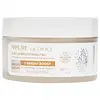What's inside
What's inside
 Key Ingredients
Key Ingredients

 Benefits
Benefits

 Concerns
Concerns

No concerns
 Ingredients Side-by-side
Ingredients Side-by-side

Water
Skin Conditioning1,2-Hexanediol
Skin ConditioningButylene Glycol
HumectantAstragalus Membranaceus Root Extract
EmollientBis-PEG-18 Methyl Ether Dimethyl Silane
EmollientGlycerin
HumectantHydroxyethylcellulose
Emulsion StabilisingAllantoin
Skin ConditioningSodium Phosphate
BufferingDisodium Phosphate
BufferingPolysorbate 60
EmulsifyingSodium Hyaluronate
HumectantLecithin
EmollientCaprylic/Capric Triglyceride
MaskingSalix Alba Bark Extract
AstringentHouttuynia Cordata Extract
Skin ConditioningCentella Asiatica Extract
CleansingCeramide NP
Skin ConditioningWater, 1,2-Hexanediol, Butylene Glycol, Astragalus Membranaceus Root Extract, Bis-PEG-18 Methyl Ether Dimethyl Silane, Glycerin, Hydroxyethylcellulose, Allantoin, Sodium Phosphate, Disodium Phosphate, Polysorbate 60, Sodium Hyaluronate, Lecithin, Caprylic/Capric Triglyceride, Salix Alba Bark Extract, Houttuynia Cordata Extract, Centella Asiatica Extract, Ceramide NP
Water
Skin ConditioningButylene Glycol
HumectantNiacinamide
SmoothingMethylpropanediol
Solvent1,2-Hexanediol
Skin ConditioningCaffeine
Skin ConditioningPhenoxyethanol
PreservativeHydroxyacetophenone
AntioxidantPEG-60 Hydrogenated Castor Oil
EmulsifyingSodium Citrate
BufferingOctyldodeceth-16
EmulsifyingDisodium EDTA
Allantoin
Skin ConditioningXanthan Gum
EmulsifyingCaprylyl Glycol
EmollientEthylhexylglycerin
Skin ConditioningCitrus Aurantium Bergamia Fruit Oil
MaskingCitric Acid
BufferingCitrus Aurantium Dulcis Peel Oil
MaskingTocopherol
AntioxidantGluconolactone
Skin ConditioningDipotassium Glycyrrhizate
HumectantAcetyl Glucosamine
Skin ConditioningSalix Alba Bark Extract
AstringentPalmitoyl Tetrapeptide-10
Skin ConditioningGalactomyces Ferment Filtrate
HumectantLactic Acid
BufferingGlycyrrhiza Uralensis Root Extract
Skin ConditioningCaprylic/Capric Triglyceride
MaskingCetyl Palmitate
EmollientSorbitan Stearate
EmulsifyingPolysorbate 80
EmulsifyingSodium Benzoate
MaskingHydrogenated Lecithin
EmulsifyingWater, Butylene Glycol, Niacinamide, Methylpropanediol, 1,2-Hexanediol, Caffeine, Phenoxyethanol, Hydroxyacetophenone, PEG-60 Hydrogenated Castor Oil, Sodium Citrate, Octyldodeceth-16, Disodium EDTA, Allantoin, Xanthan Gum, Caprylyl Glycol, Ethylhexylglycerin, Citrus Aurantium Bergamia Fruit Oil, Citric Acid, Citrus Aurantium Dulcis Peel Oil, Tocopherol, Gluconolactone, Dipotassium Glycyrrhizate, Acetyl Glucosamine, Salix Alba Bark Extract, Palmitoyl Tetrapeptide-10, Galactomyces Ferment Filtrate, Lactic Acid, Glycyrrhiza Uralensis Root Extract, Caprylic/Capric Triglyceride, Cetyl Palmitate, Sorbitan Stearate, Polysorbate 80, Sodium Benzoate, Hydrogenated Lecithin
Ingredients Explained
These ingredients are found in both products.
Ingredients higher up in an ingredient list are typically present in a larger amount.
1,2-Hexanediol is a synthetic liquid and another multi-functional powerhouse.
It is a:
- Humectant, drawing moisture into the skin
- Emollient, helping to soften skin
- Solvent, dispersing and stabilizing formulas
- Preservative booster, enhancing the antimicrobial activity of other preservatives
Allantoin is a soothing ingredient known for its protective and moisturizingg properties. Because of this, it is often added to products with strong active ingredients.
Studies show higher concentrations of this ingredient can promote wound healing.
Though it can be derived from the comfrey plant, allantoin is produced synthetically for cosmetic products to ensure purity.
Learn more about AllantoinButylene Glycol (or BG) is used within cosmetic products for a few different reasons:
Overall, Butylene Glycol is a safe and well-rounded ingredient that works well with other ingredients.
Though this ingredient works well with most skin types, some people with sensitive skin may experience a reaction such as allergic rashes, closed comedones, or itchiness.
Learn more about Butylene GlycolThis ingredient is an emollient, solvent, and texture enhancer. It is considered a skin-softener by helping the skin prevent moisture loss.
It helps thicken a product's formula and makes it easier to spread by dissolving clumping compounds.
Caprylic Triglyceride is made by combining glycerin with coconut oil, forming a clear liquid.
While there is an assumption Caprylic Triglyceride can clog pores due to it being derived from coconut oil, there is no research supporting this.
Learn more about Caprylic/Capric TriglycerideSalix Alba Bark Extract comes from the white willow tree, which is native to Europe and Central Asia.
Salix Alba Bark Extract has often been described as salicylic acid's cousin. This is due to the salicin it contains. However, studies are limited showing salix alba bark to be an effective salicylic acid alternative.
Salicin does have anti-inflammatory and antioxidant properties. It has shown to decrease the formation of inflammatory mediators, such as tumor necrosis factor-α and nuclear factor-kappa B. Salicin also has a mildly exfoliating effect on the skin.
Several other components in salix alba bark extract also contain antioxidant properties, such as flavonoids and polyphenols. Antioxidants may help with anti-aging as they neutralize harmful free-radical molecules.
Willow Bark extract has been used for thousands of years. Ancient civilizations used white willow to help treat pain and fevers.
Learn more about Salix Alba Bark ExtractWater. It's the most common cosmetic ingredient of all. You'll usually see it at the top of ingredient lists, meaning that it makes up the largest part of the product.
So why is it so popular? Water most often acts as a solvent - this means that it helps dissolve other ingredients into the formulation.
You'll also recognize water as that liquid we all need to stay alive. If you see this, drink a glass of water. Stay hydrated!
Learn more about Water